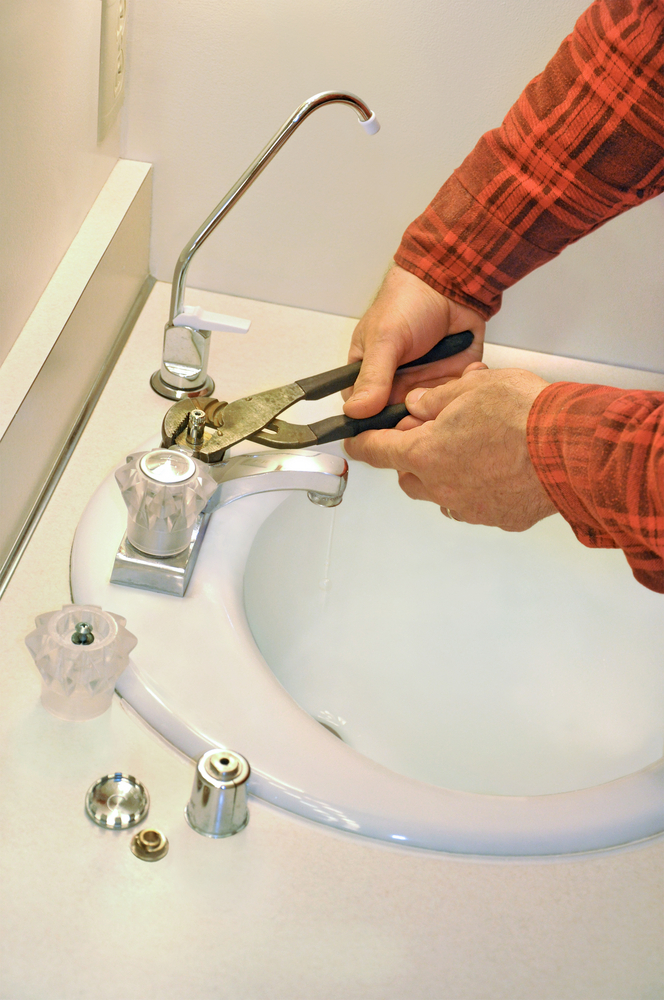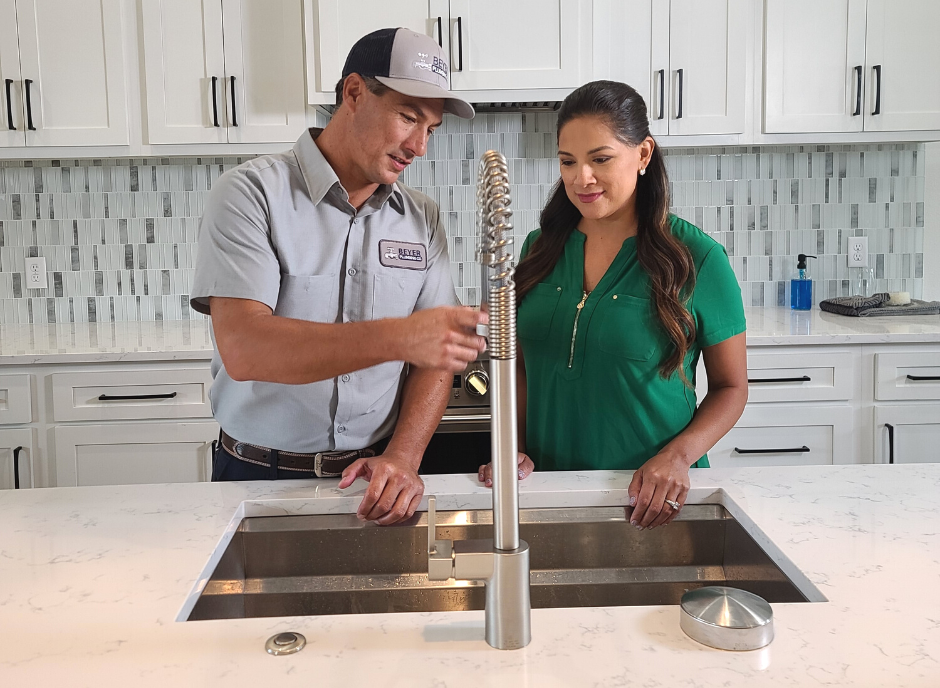Learning the Value of Dealing with a Broken Faucet
Learning the Value of Dealing with a Broken Faucet
Blog Article
Just about every person has their own individual assumption when it comes to What Causes Leaky Faucets & How To Fix Them.

Dripping faucets could seem like a small aggravation, yet their influence surpasses simply the nuisance of the noise. From wasting water to sustaining unnecessary financial expenses and health risks, neglecting a leaking tap can result in various consequences. In this write-up, we'll delve into why it's crucial to address this common house problem without delay and successfully.
Wastefulness of Water
Ecological Influence
Leaking faucets contribute considerably to water wastefulness. According to the Environmental Protection Agency (EPA), a single faucet trickling at one drip per secondly can squander more than 3,000 gallons of water annually. This not just pressures water sources however also affects environments and wild animals dependent on them.
Step-by-Step Guide to Dealing With a Dripping Tap
Devices Required
Before attempting to take care of a trickling tap, collect the needed tools, including an adjustable wrench, screwdrivers, substitute components (such as washers or cartridges), and plumber's tape.
Common Faucet Issues and Their Solutions
Recognize the kind of faucet and the specific problem causing the drip. Usual issues consist of damaged washers, rusty valve seats, or faulty O-rings. Describe manufacturer guidelines or on-line tutorials for step-by-step guidance on repair work.
Financial Expenses
Raised Water Expenses
Past the ecological influence, dripping taps can pump up water bills considerably. The gathered wastefulness gradually converts right into greater utility expenditures, which could have been prevented with prompt repairs.
Prospective Residential Or Commercial Property Damage
Additionally, extended dripping can bring about harm to fixtures and surface areas surrounding the tap. Water build-up can cause discoloration, corrosion, and even architectural concerns if left neglected, leading to extra repair work costs.
Health Problems
Mold and Mold Growth
The continuous presence of moisture from a leaking faucet creates a suitable setting for mold and mold development. These fungis not only endanger interior air top quality yet also position health and wellness dangers, specifically for people with respiratory system problems or allergies.
Waterborne Diseases
Stationary water in leaking faucets can become a breeding place for bacteria and other virus, enhancing the danger of waterborne illness. Pollutants such as Legionella microorganisms grow in stagnant water, potentially bring about serious ailments when consumed or inhaled.
Do it yourself vs. Specialist Repair
Advantages and disadvantages of Do It Yourself Repair Service
While some might attempt to take care of a leaking faucet themselves, DIY repairs feature their very own collection of difficulties. Without appropriate knowledge and devices, DIY attempts can aggravate the concern or cause incomplete fixings, extending the problem.
Advantages of Hiring an Expert Plumber
Hiring an expert plumber ensures that the underlying root cause of the dripping tap is addressed successfully. Plumbers have the proficiency and devices to detect and repair faucet problems successfully, saving time and decreasing the threat of further damage.
Environmental Obligation
Specific Payment to Preservation
Taking duty for fixing dripping faucets lines up with broader initiatives towards water conservation and environmental sustainability. Every individual's actions collectively make a significant effect on maintaining priceless sources.
Lasting Living Practices
By focusing on timely repair services and adopting water-saving practices, people add to sustainable living practices that profit both existing and future generations.
Preventive Measures
Normal Upkeep Tips
To prevent trickling faucets, do routine upkeep such as cleaning aerators, evaluating for leaks, and changing worn-out components without delay. Furthermore, take into consideration installing water-saving gadgets or updating to much more reliable fixtures.
Relevance of Prompt Repair Works
Attending to trickling faucets as soon as they're observed protects against further water wastefulness and possible damages, ultimately saving both water and money in the long run.
Effect On Property Worth
Understanding of Well-Maintained Building
Keeping a residential or commercial property in good condition, including addressing upkeep concerns like dripping taps, improves its viewed value and worth amongst potential buyers or lessees.
Impact on Resale Value
Residences with well-maintained plumbing components, including taps, command higher resale worths in the property market. Dealing with trickling faucets can add to a positive perception throughout residential property assessments and arrangements.
Conclusion
Attending to a dripping faucet exceeds plain convenience; it's a necessary step toward saving water, lowering economic costs, and protecting health and wellness and building. Whether with DIY repairs or specialist support, acting to fix trickling taps is a small yet impactful means to advertise responsible stewardship of sources and contribute to a healthier, much more sustainable future.
How to Fix a Dripping or Leaky Faucet
A leaking faucet is one of the most common problems that homeowners encounter, but it being commonplace doesn’t make it any less annoying. The constant drip drip drip of a leaking bathtub faucet, showerhead, or sink tap can disturb your home’s serenity. Left neglected, a dripping faucet can also result in higher water bills and discoloration or mold growth in your sink or plumbing fixtures.
Fortunately, you don’t have to be a trained plumber to know how to stop a dripping faucet. With some basic tools, replacement parts, and a little patience, leaky faucet repair is a breeze. In this article, we’ll explain what causes dripping faucets and how you can fix them.
What Causes a Leaking Faucet?
Kitchen and bathroom faucets come in all manner of designs, but most involve some combination of valves, O-rings, seals, and washers. The O-ring is usually the weakest link, but any one of these pieces can wear down over time. Heat, moisture, temperature fluctuations, minerals, mold, and movement can contribute to warping and corrosion, breaking the watertight seal. This just comes with the territory of being a homeowner. Everything is always subject to wear and tear, and some component parts of your appliances and fixtures need to be replaced on occasion. At least replacement O-rings are cheap!
More rarely, dripping faucets can be a symptom of excessively high water pressure. Were this the case in your home, you would probably notice that the leak is not isolated to one faucet. Water pressure issues are harder to resolve on your own. We recommend contacting a professional plumber if you suspect your water pressure is too high.
How to Fix a Dripping Faucet
Pipe wrench or monkey wrench Allen wrench set Screwdrivers Old towel or rag Shut off the water.
Before you do anything, you need to turn off the water to keep from drenching your kitchen or bathroom. You should find a valve under the sink and against the wall. Once you’ve turned this valve, try turning the faucet on to confirm that the water source has been cut off.
If you can’t locate your local valve for the faucet you’re working on, you can always shut off the water to the house at the main valve. Of course, this will prohibit anyone from using the sinks, showers, or toilets while you’re working on the faucet that’s giving you trouble.
Plug or block the drain.
You’ll be disassembling the faucet and removing some small bits of hardware. Plug the drain with a stopper or rag to avoid the possibility of a small screw falling into your P-trap.
Take apart the faucet assembly.
There are several varieties of kitchen and bathroom faucets, each with its own manner of assembly. For detailed instructions on how to disassemble your faucet, you can refer to the fixture’s manual or contact the manufacturer. If you know whether you have a ball, disc, cartridge, or compression faucet, you can find detailed schematics online.
In general, you need to begin by removing the faucet handles. You might notice a small screw that you’ll need to remove with a screwdriver or Allen wrench. If you don’t see any visible securing hardware, it’s likely hidden under a decorative cap that can be unscrewed or popped off with flathead screwdriver.
Remove each piece methodically, consulting a schematic when necessary. Take notes or arrange the pieces in such a way to make it easier to correctly reassemble the faucet later.
Remove the cartridge.
Once you’ve removed the handles and securing hardware, you should be able to remove the valve cartridge or stem. Some cartridges will slide right out. Other faucet models will require you to loosen a nut with a pipe wrench before you can remove the valve stem.
Examine the exposed hardware.
With the cartridge or stem removed, inspect the component parts. Check the rubber O-rings for wear and tear. Also examine the seat washer for corrosion or other damage. These pieces are usually the responsible parties for a dripping faucet, but it’s worth inspecting the other component parts while you have the faucet disassembled.
Find replacement parts.
Once you’ve identified which faucet component has failed, find an identical replacement. Your local hardware store should have O-rings, seat washers, and other standard components in stock. If you have a luxury or uncommon faucet, you may have to contact the manufacturer for a replacement part.
It’s a good idea to take your old parts with you to the hardware store so you can compare them with the store’s inventory and be sure you’re purchasing the correct replacement.
Reassemble the faucet.
With your new parts in hand, reconstruct the faucet and handles. Don’t be tempted to overtighten screws or nuts. You might think this could create a better seal, but it can instead damage or bend a delicate part of the assembly and create a new problem for you.
Turn on the water and test the faucet.
The only thing left to do is test your work. Unplug the sink, turn the water back on, and try the faucet. Congratulate yourself on a job well done!
https://www.libertyhomeguard.com/how-to-fix-a-dripping-or-leaky-faucet/

As a serious person who reads about , I figured sharing that piece of content was essential. Please set aside a second to share this write-up if you appreciated it. We value reading our article about 4 Common Reasons for a Leaky Faucet.
Report this page